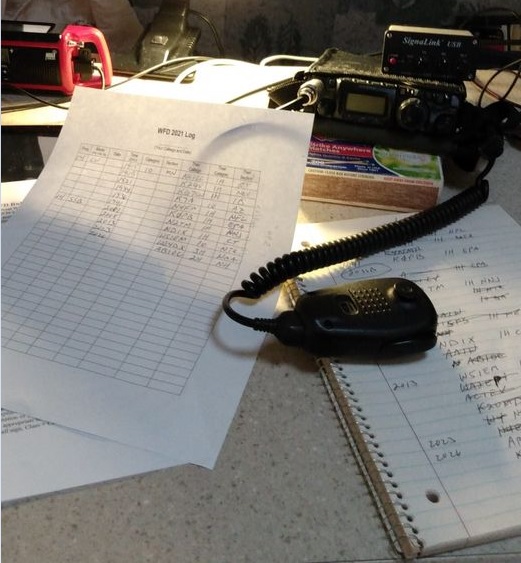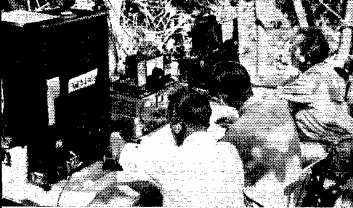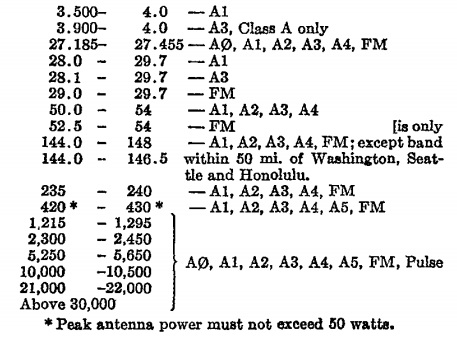 This weekend is ARRL Field Day, an amateur radio operating event in which hams set up their stations in remote locations and attempt to make as many contacts as possible. It’s a hotly debated question of whether it’s an emergency preparedness exercise, a contest, or just a fun weekend. The truth is that it’s all three.
This weekend is ARRL Field Day, an amateur radio operating event in which hams set up their stations in remote locations and attempt to make as many contacts as possible. It’s a hotly debated question of whether it’s an emergency preparedness exercise, a contest, or just a fun weekend. The truth is that it’s all three.
Even if all infrastructure were to be destroyed immediately, it would still be quite possible for hams to communicate worldwide using simple equipment, relying on nothing other than the laws of physics. Short of a zombie apocalypse, the need for such ability might be rare, but it’s a point of pride with hams what they can do.

1946 Field Day. QST for Feb. 1947.
Amateur radio was off the air for the duration of World War II, so Field Day 1946, 75 years ago, was the first postwar opportunity for hams to show that they could still communicate off-grid.
When the results were published, it was pointed out that comparisons with earlier Field Days were not appropriate. Hams had only recently come back on the air, and they were not yet allowed on all bands. In particular, they did not yet have privileges on the 160, 40, and 20 meter bands, all workhorses of earlier Field Days. Instead, their HF was limited to 80, 11 and 10 meters. The top portion of the 80 meter band had just been re-opened, and here were the allocations, as shown in the June 1946 issue of QST:
The top score in the 1946 event was W2FC/2, the Jersey Shore Amateur Radio Association, which netted 9621 points from a total of 809 contacts. The 27 participants had eight transmitters on the air simultaneously.
Shown above is my most recent field operation. It wasn’t ARRL Field Day, but instead Winter Field Day 2021.


I’m not a Ham, but have a GMRS license (which some HAM operators don’t think much of). Anyhow, I wonder if something similar exists for GMRS?
Not that I’m aware of. There’s no reason why you couldn’t do something like it yourself, but the problem is that with GMRS, there aren’t a lot of opportunities to talk to random other stations. With ham radio, especially during this event, there are thousands of other stations waiting to contact you.
Getting a ham license is not difficult. As a matter of fact, I have written a study guide for the test. If you read my book through, you should have no difficulty passing the multiple guess test.